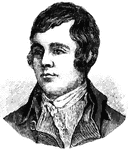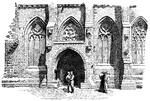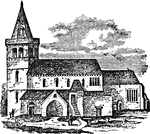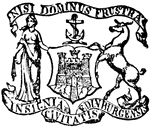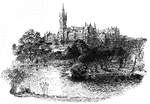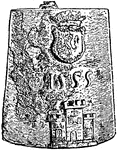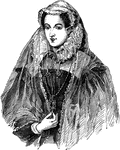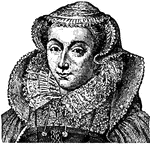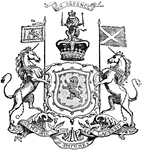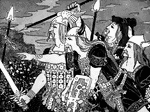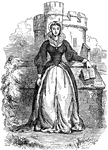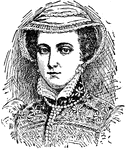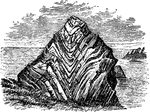Scotland
This ClipArt gallery offers 43 images related to Scotland, including famous landmarks, scenic views, buildings, and coins.

Écu, Obverse
The obverse side of an écu of James V of Scotland, a Scotch gold coin also called a crown.

Écu, Reverse
The reverse side of an écu of James V of Scotland, a Scotch gold coin also called a crown.

Melrose Abbey
Melrose Abbey is a Gothic style Christian monastery located in Melrose, Scotland. The Abbey was founded…

Melrose Abbey
"As the ruins of Fountains Abbey are a memorial of the iconoclasm of the Reformation movement in England,…
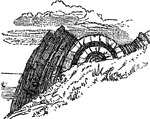
Anticlinal Fold
A symmetrical anticlinal fold, the top of which has been eroded. Near St. Abb's Head, Scotland.
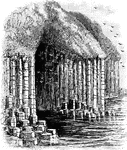
Basaltic Columns
Basaltic Columns at Finagl's Cave in Scotland. It is formed entirely from hexagonally-jointed basalt.
Forth Bridge
The Forth Bridge is a cantilever railway bridge over the Firth of Forth in the east of Scotland, to…
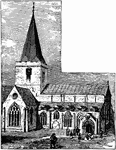
The Old Church, Perth, N.B.
During the Middle Ages, Perth's only parish church was the Burgh Kirk of St. John the Baptist. With…

Dundee
"A royal and parliamentary burgh and seaport, situated on the east coast of Scotland, in the county…
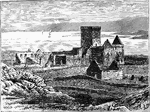
Iona
Iona is a small island in the Inner Hebrides of Scotland. Iona has an important place in the history…
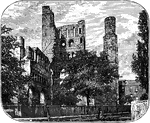
Ruins of Kelso Abbey
Kelso Abbey is a Scottish abbey built in the 12th century by a community of Tironensian monks who had…
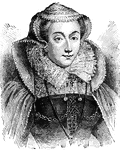
Mary Queen of Scots
Mary, Queen of Scots (1542 – 1587), also known as Mary Stuart or Mary I, reigned over Scotland from…

Mary, Queen of Scots
Mary I (popularly known in the English-speaking world as Mary, Queen of Scots and, in France, as Marie…

Melrose Abbey Ruins
Melrose Abbey is a Gothic-style abbey in Melrose, Scotland. It was founded in 1136 by Cistercian monks,…
!["The buildings which have been constructed in these various styles differ essentially from those which have been carried out in the same styles in other countries. In churches and other buildings erected in the Gothic style this difference mainly consists in deficiency of strongly marked architectural keeping, for both main and subordinate features are generally irregular. In most cases the whole group is highly unsymmetrical, and the tower is at one corner, by which a picturesque effect is aimed at [shown here]. The material and the mode of construction are generally left visible, and it is endeavoured to utilize them as ornament; and this not only externally but also in the interior, where the beams and rafters of the roof are often left quite bare; they are even thus exposed where their appearance is not in keeping with the destination of the buildings."](https://etc.usf.edu/clipart/74400/74413/74413_memorial_chu_mth.gif)
Memorial Church in Scotland
"The buildings which have been constructed in these various styles differ essentially from those which…
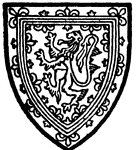
Scotland
The king of Scots bore Gold a lion within a double tressure flowered and counterflowered gules

Scotland, St. Andrew's Banner
Scotland, St. Andrew's Banner. St. Andrew is the patron saint of Scotland.
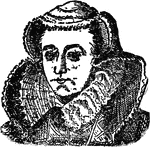
Mary Stuart
Queen of Scots, born in the palace of Linlithgow, Scotland, Dec. 8, 1542; executed Feb. 8, 1587. She…
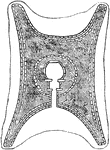
Tumulus
"Plan of chambered barrow or cairn, at Garrywhin, Caithness. BARROW, a sepulchral mound of earth or…

